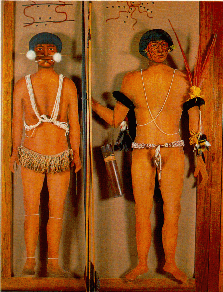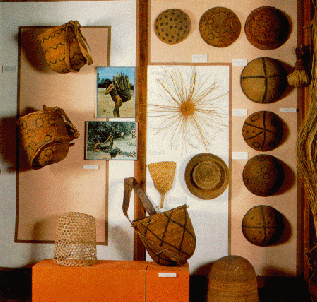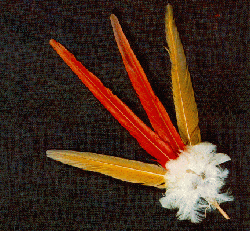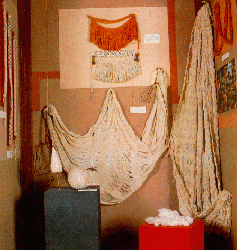 ANOMAMI
ANOMAMI ANOMAMI
ANOMAMI  |
"The Yanomani belong to the etnia Yanomama, the
oldest of the Amazonas. They are farmers, hunters,
fishermen and collectors. The territory that they occupy
is distributed in an uneven form among the south of
Venezuela and the north of Brazil and has a total
extension of some 177,000 km2. The population is
estimated to be near 22,000 individuals". The
population of Venezuela is 12,082 individuals: 9717
Yanomami and 2,365 Sanema.
"The Yanomami were divided into four linguistic groups. These tongues, although distinct, are mutually intelligible: the Yanomami, the Sanema (Sanima), Ninam (Yanam) and Yanomam. With exception to the latter groups these tongues can be found in Venezuela. |
The Yanomama language and its various dialects have at times been included in the lingusitic family Chibcha, other times in the Caribe family. Nevertheless, many scientists prefer to classify it as an independent tongue.
 |
Hematologic tests have shown that they are not genetically related to any other ethnic group in Amazonas. |
|---|
Until recently, these natives have remained confined in almost complete isolation. The first sporadic contacts were carried out in the first decades of the last century, but only as of 1950 have they had continuous contact with certain sectors of our society, especially missionaries and scientists.
 |
The traditional places of settlement have been mountains and heads of the most important rivers in the south of Venezuela and north of Brazil. The place of greater demographic density previous to the last expansion was located in the Sierra Parima, and only at the beginning of this century did they begin to expand, following the courses of the large rivers such as the Orinoco, Uraricoera, Black and Branco. At present the majority of demographic concentration is situated on the Brazilean side of the Sierra Parima and on the Venezuelan side in the space between Sierra and the Orinoco, specially in the basins of some of their tributaries such as the Ocamo, Putaco, Hé nita, Manaviche and Mavaca. |
|---|
Each community or residential unit , in spite of continuous relations maintained with its neighbors, constitutes a sociopolitical setting with relative autonomy. It is a type of "town" formed by a great roof or by many family houses, also circularly arranged.
 |
To the south of the Orinoco, the communities are used to have between 40 and 250 inhabitants.It was common that several communities arose in a recent past of a "mother" community found especially nearby and they coordinated their migratory displacements as a means of security. The demographic density was situated in 0.34 inhabitants by km2. At present, on account of the epidemics suffered, it is around 0.25 inhabitants by km2. |
|---|
The elementary social unit is the simple or nuclear family, that is constituted in a unit of reproduction and production.




©Todos los derechos reservados, se prohibe la
reproducción salvo permiso por escrito del autor.
©All rigths reserved, material duplication is prohibited
without written authorization by its author.